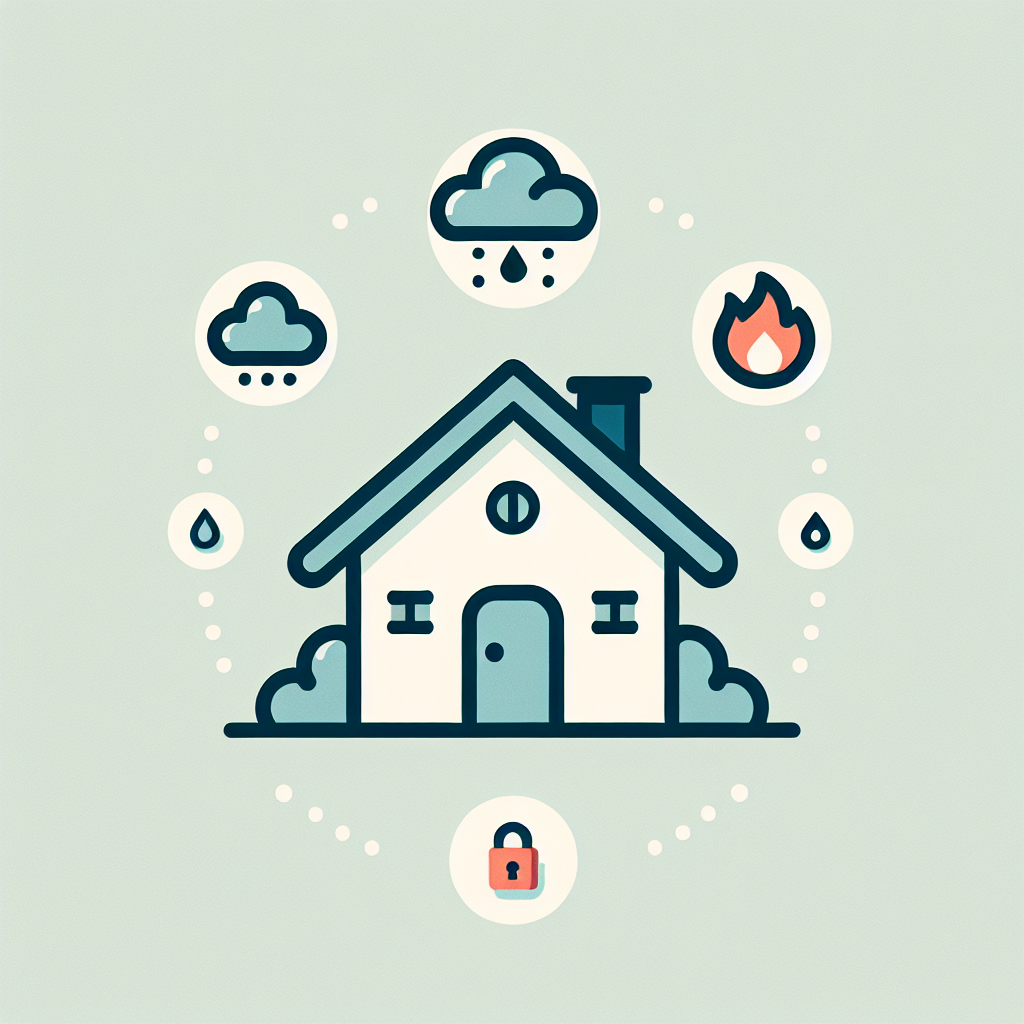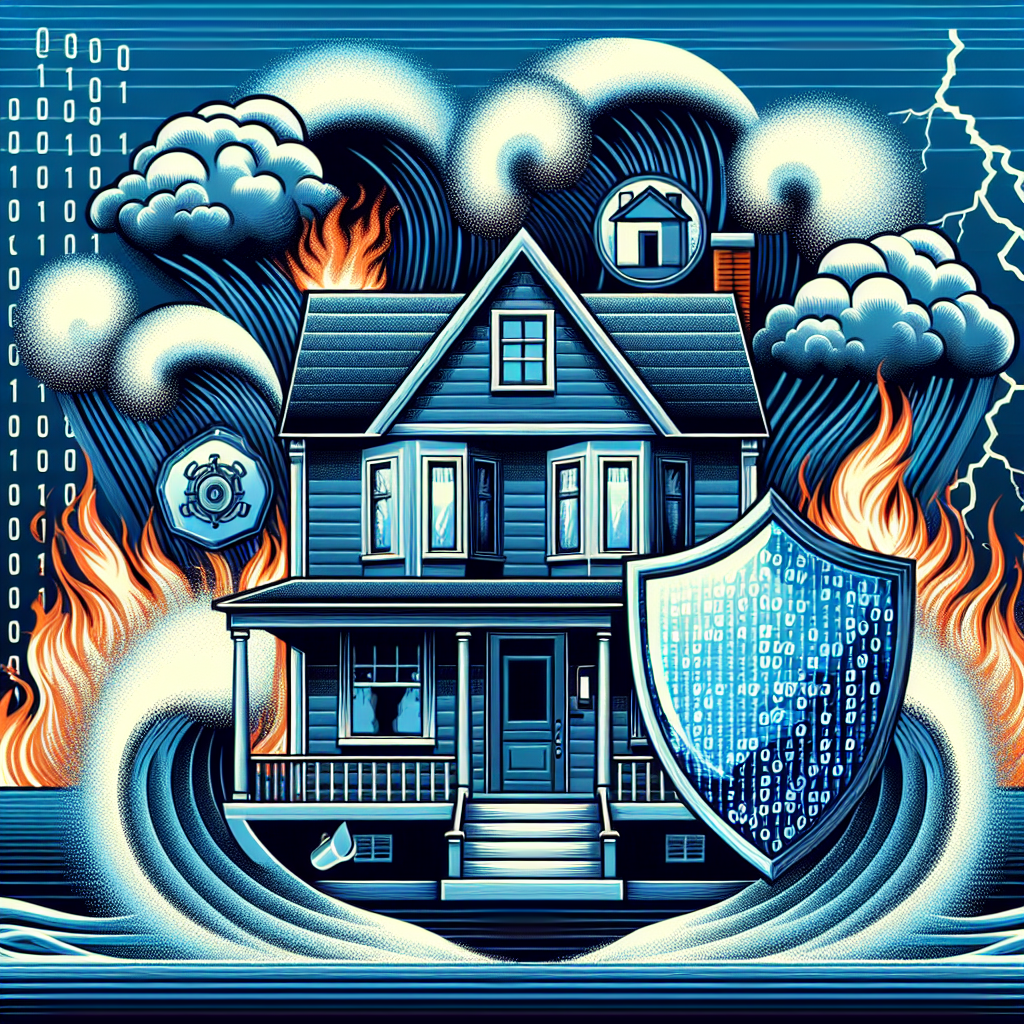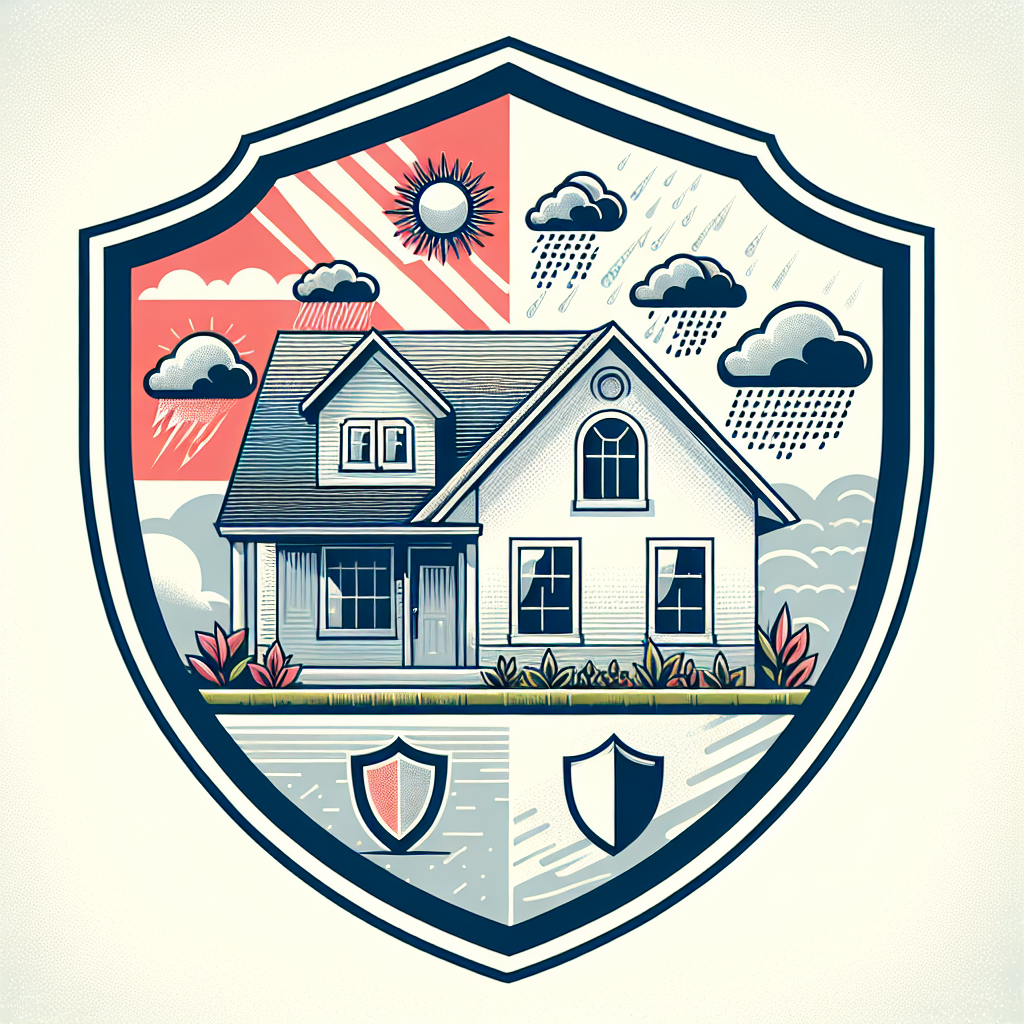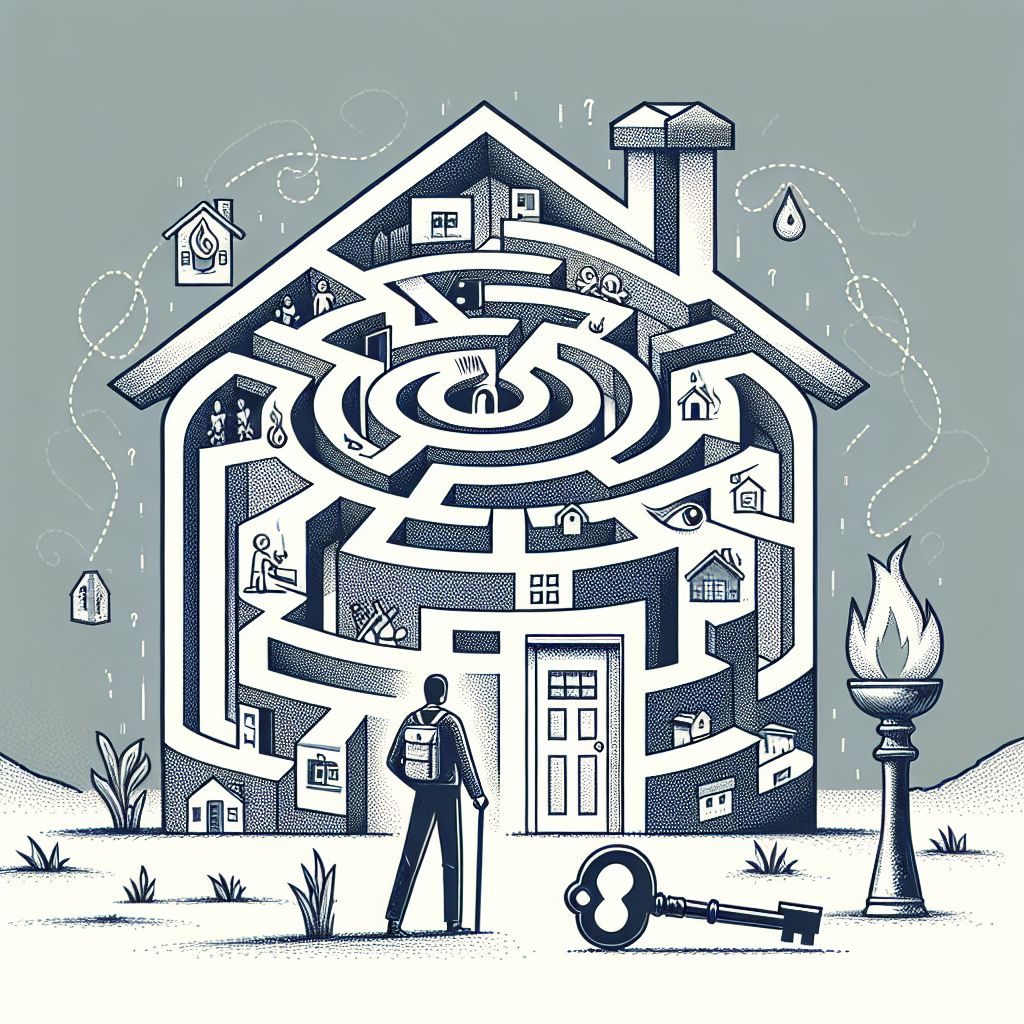Filed under Home Insurance on
Important Home Insurance Coverage You Should Know

Why your policy details matter more than ever
Wildfires, convective storms, freezing bursts, and plumbing leaks are turning small oversights into big bills. Construction costs have also climbed sharply since 2020, which means the same limit that felt adequate a few years ago may now be thin. Swiss Re estimates that global insured catastrophe losses have topped the $100 billion mark several years in a row, and U.S. agencies report record-breaking counts of billion-dollar weather disasters. Against that backdrop, the fine print of your homeowners policy isn’t optional reading—it’s your financial recovery plan.
This guide breaks down the Important Home Insurance Coverage You Should Know, clarifies what standard policies do (and do not) cover, and highlights smart add-ons that can dramatically improve your outcome after a loss. You’ll also find practical tips for pricing, documenting, and filing claims so you can move faster when it counts.
How a standard homeowners policy is structured
Most owner-occupied homes carry an HO-3 (special form) or HO-5 (comprehensive form) policy. These cover your home on an “open perils” basis (unless excluded), while personal property is usually on a “named perils” list unless you upgrade. Here’s what the core parts typically look like:
Dwelling (Coverage A)
This is the limit to rebuild your home at today’s prices. It should reflect local labor rates, materials, permitting, architect fees, debris removal, and code upgrades. Because costs have been volatile, many carriers add an inflation guard (automatically increasing your limit during the term). Ask how your limit is calculated—some insurers use replacement cost estimators, but unique features like custom windows, tile, or trim can require manual adjustments.
Other Structures (Coverage B)
Fences, detached garages, sheds, and mailboxes often default to 10% of Coverage A. If you’ve added a large pergola, pool house, or ADU, that default may be too low. Increase this limit if your yard investments are significant.
Personal Property (Coverage C)
Furniture, electronics, clothing, appliances, and decor fall here. Many policies default to 50%–70% of Coverage A. Two crucial questions:
- Do you have replacement cost coverage on contents, or actual cash value? Replacement cost reimburses what it takes to buy new equivalents; actual cash value subtracts depreciation.
- Have you addressed sublimits? Items like jewelry, watches, firearms, silverware, collectibles, and cash often have low caps per item or per category unless you schedule them.
Do a quick household audit to minimize surprises:
- Walk each room with your phone, record a slow video, and narrate brands and purchase years.
- Keep big-ticket receipts and appraisals in cloud storage.
- Export a list of serial numbers for electronics and appliances.
Loss of Use (Coverage D)
If your home is uninhabitable after a covered loss, this pays for additional living expenses—temporary housing, meals above your normal budget, pet boarding, and sometimes mileage. Verify whether your policy uses a time limit (e.g., 12–24 months) or a dollar limit (e.g., 20%–30% of Coverage A). In high-cost rental markets, a dollar cap can evaporate quickly.
Personal Liability (Coverage E)
Liability covers bodily injury or property damage you or household members accidentally cause to others. It can pay legal defense and settlements. Consider your net worth and future income when choosing limits; many homeowners opt for $300,000–$500,000 and add a $1–$5 million umbrella for broader protection. The Insurance Information Institute notes that dog-bite and related claims continue to cost insurers more each year—just one example of why adequate limits and an umbrella can be critical.
Medical Payments to Others (Coverage F)
This is a no-fault coverage for minor injuries that occur on your property, typically between $1,000 and $5,000. It’s not a substitute for liability, but it can defuse small incidents that don’t warrant a lawsuit.
Perils, exclusions, and the gaps that surprise homeowners
Understanding what triggers coverage is as important as the limits themselves. HO-3 and HO-5 policies list exclusions—common ones include flood, earthquake, earth movement, wear and tear, pests, manufacturer defects, neglect, and power failure originating off-premises. Slow leaks may be excluded; sudden and accidental discharge is more likely covered. Review these carefully to identify the Important Home Insurance Coverage You Should Know that plugs your policy’s holes.
Open perils vs. named perils
“Open perils” means everything is covered unless excluded. “Named perils” lists only specific causes of loss (fire, theft, vandalism, wind, etc.). If your personal property is only named perils, consider upgrading to open perils (often called HO-5 or a special contents endorsement) for broader protection.
Endorsements that meaningfully upgrade protection
Optional add-ons can turn a decent policy into a strong one. Below are the Important Home Insurance Coverage You Should Know when tailoring your plan.
Extended or Guaranteed Replacement Cost
After major catastrophes, material and labor prices spike. Extended replacement cost adds a buffer—often 25%–50% above your dwelling limit. “Guaranteed” replacement cost, offered by some carriers to well-maintained, insured-to-value homes, pays whatever it costs to rebuild, subject to policy terms. If available in your state, it’s one of the most powerful endorsements you can buy.
Ordinance or Law Coverage
Building codes evolve. If your 1970s wiring or staircase no longer meets code, you must rebuild to current standards. Ordinance or law coverage funds these upgrades and the cost to demolish undamaged portions when required. Many policies include 10%; older or historic homes may need 25%–50% or more.
Water Backup of Sewers and Drains
Water damage is among the most frequent home claims—and standard policies typically exclude backups that originate off your premises or through sewers/drains. This endorsement can cover damaged floors, drywall, and cleanup costs from a sump pump failure or municipal backup. Choose limits that fit your basement finishes and mechanical systems.
Service Line Coverage
Homeowners are often responsible for the section of water, sewer, electric, gas, or data lines on their property. Service line coverage pays to repair or replace buried lines damaged by wear, root intrusion, freezing, or collapse, along with excavation and landscaping restoration.
Equipment Breakdown
This modern alternative to a home warranty covers sudden mechanical, electrical, or pressure system failures of appliances, HVAC systems, and sometimes smart home devices. It can also extend to power surges, which are increasingly common.
Scheduled Personal Property
High-value items—engagement rings, luxury watches, fine art, instruments, collectibles—are better protected when “scheduled.” Scheduling sets item-specific values, often with broader “all risk” coverage and no deductible. Keep appraisals current; values can appreciate.
Cyber and Identity Theft
Identity restoration assistance, reimbursement for certain costs, and coverage for cyber extortion or data breach events at home are now available from many carriers. For remote workers and smart households, this can be a useful layer.
Home-Sharing or Short-Term Rental Endorsement
Renting your home or a room on a platform can void or restrict coverage without a proper endorsement. If you host guests, ask for a specific home-sharing extension that addresses guest-caused damage, liability, and loss of income if your listing is down due to a covered loss.
Earthquake Coverage
Earth movement is excluded in standard policies. Earthquake coverage is available via endorsements or separate policies in many states. Deductibles are often a percentage of the dwelling limit. Even outside major fault lines, soft-story homes and houses on fill or slopes benefit from a conversation with a local expert.
Flood Insurance
FEMA reminds homeowners that just one inch of water can cause tens of thousands in damage, and standard policies exclude flood. Coverage is available through the National Flood Insurance Program (NFIP) or private flood markets, which can offer higher limits and additional features like temporary living expenses. Don’t rely solely on being “outside the flood zone”—many claims occur in moderate-risk areas.
Wind, hail, and hurricane deductibles
In coastal and hail-prone regions, wind or named-storm deductibles often apply as a percentage of the dwelling limit (1%–5% or more). On a $500,000 home with a 2% hurricane deductible, you’d pay the first $10,000 of covered wind damage. Ask:
- What events trigger the percentage deductible—any wind, named storm, or hurricane only?
- Is the deductible per occurrence or per season?
- Are there credits for roof age, impact-resistant shingles, hurricane shutters, or fortified construction?
Understanding these mechanics is a core part of the Important Home Insurance Coverage You Should Know in storm-exposed states.
Replacement cost vs. actual cash value
Valuation rules decide how much you’re paid. Replacement cost value (RCV) covers what it takes to buy new items of like kind and quality; actual cash value (ACV) subtracts depreciation for age and condition. Many policies pay ACV up front and release the difference to RCV after you complete repairs or purchase replacements and submit receipts. Roofs are a hot spot—some carriers default to ACV on older roofs. Confirm your roof’s valuation and consider paying a modest premium for RCV if available.
Because construction inflation can erode your limits, confirm that your policy’s inflation guard is active and that your dwelling limit reflects current rebuild costs. This is one of the Important Home Insurance Coverage You Should Know during annual reviews, especially after renovations.
How claims really work (and how to prepare)
When the unexpected happens, small steps early can speed recovery and reduce disputes:
- Make emergency repairs to prevent further damage—photograph everything before and after. Save all receipts.
- Notify your insurer promptly and ask about preferred vendors for mitigation (water extraction, tarping) if required by your policy.
- Document personal property with photos, model numbers, and links or receipts showing replacement cost.
- Track additional living expenses separately from normal spending—insurers reimburse the increase above your baseline.
- Ask about “matching” for siding or roofing. Some states or endorsements address replacing undamaged materials to achieve a reasonable match.
- If you disagree with an estimate, consider a contractor’s scope, a public adjuster, or the policy’s appraisal process.
Pricing: what drives your premium (and how to save smart)
Insurers price risk using dozens of factors. Common drivers include roof age and material, local weather hazard scores, distance to fire services, your claim history, credit-based insurance score (where allowed), the presence of trampolines or pools, and dog breeds. Here are ways to keep value high without cutting critical protection:
- Increase non-catastrophe deductibles you can comfortably afford; keep percentage storm deductibles manageable.
- Bundle home and auto; multi-policy discounts can be substantial.
- Upgrade roofs to impact-resistant materials; add storm shutters, water-leak sensors, and monitored alarms—ask for mitigation credits.
- Install automatic water shutoff valves; many carriers now offer discounts or endorsements tied to leak detection.
- Review scheduled items; removing outdated schedules or consolidating appraisals can refine costs.
- Shop coverage quality, not just price. A slightly higher premium for guaranteed replacement cost or broader perils can be the best money you spend.
Regional considerations that change the calculus
Local risk shapes the Important Home Insurance Coverage You Should Know in meaningful ways:
- Coastal: Look for higher wind or named-storm deductibles, roof age surcharges, and requirements for shutters or roof attachments. Flood is a must-consider even outside high-risk zones.
- Hail belt: Impact-resistant roofing often pays for itself through credits and reduced losses. Ask about cosmetic damage limitations on metal roofs.
- Wildfire interface: Defensible space, ember-resistant vents, and Class A roofs may unlock coverage or discounts; some insurers require them. Consider extended replacement cost due to post-fire price surges.
- Northern freeze: Water backup and equipment breakdown are particularly useful; install smart leak detectors near washing machines, water heaters, and under sinks.
- Earthquake zones: Brace water heaters, retrofit cripple walls, and consider an earthquake deductible you can truly afford.
- Urban infill and older housing stock: Ordinance or law limits should be higher; service line and sewer backup become more relevant as infrastructure ages.
Myths that can cost you
- “I’m not in a flood zone, so I don’t need flood insurance.” Many claims happen in moderate or low-risk areas; FEMA’s one-inch rule illustrates how small floods become large bills.
- “The city is responsible for my broken water line.” You likely own and must repair the portion on your property—service line coverage fills this gap.
- “My jewelry is covered because it’s listed under contents.” Without scheduling, sublimits may cap losses at a fraction of the value.
- “I’ll get a brand-new roof if it hails.” Not necessarily—older roofs may be ACV-only without an upgrade, and cosmetic-only dents can be excluded.
- “I can wait to set my dwelling limit.” Underinsuring at the start can limit your claim payment due to co-insurance or underinsurance penalties.
Trends and expert takeaways
Industry data shows water damage, wind/hail, and theft as persistent loss drivers, while severe convective storms are raising both frequency and severity of claims across the central and eastern U.S. At the same time, home values and construction costs have escalated, creating underinsurance risk even for diligent owners. Experts from the Insurance Information Institute, NAIC, and catastrophe modelers emphasize annual coverage reviews and mitigation investments—simple steps like leak detection, roof upgrades, and defensible space can reduce loss probability and improve insurability.
In short, the Important Home Insurance Coverage You Should Know has expanded beyond the basics. Endorsements like water backup, ordinance or law, and extended replacement cost are becoming mainstream needs rather than luxuries.
A pre-renewal checklist
Use this quick list to make sure the Important Home Insurance Coverage You Should Know is reflected on your policy before you renew:
- Confirm your dwelling limit matches current rebuild costs; ask for a replacement cost recalculation and consider extended or guaranteed replacement cost.
- Verify replacement cost on contents and address sublimits by scheduling high-value items.
- Add water backup, service line, and equipment breakdown if relevant to your home’s age and systems.
- Increase ordinance or law to at least 25% for older homes; more for historic or heavily remodeled properties.
- Understand your wind/hail or named-storm deductible and adjust as needed.
- Decide on earthquake and flood; these perils are excluded from standard policies.
- Install or maintain mitigation features (leak sensors, monitored alarms, impact-resistant roofing) and request credits.
- Update your home inventory video and store it in the cloud along with receipts and appraisals.
- Right-size your liability limit and consider an umbrella policy.
- Ask about coverage for home-sharing, home-based business gear, and cyber/ID theft if they apply.
Real-world scenarios that highlight coverage value
Consider these common events and how the right coverage changes outcomes:
- Sump pump failure after heavy rain: Without water backup coverage, you could pay out of pocket for finished-basement flooring, drywall, and mold remediation. With it, cleanup and repairs are typically covered up to your endorsement limit.
- Kitchen fire with code upgrades: Standard dwelling coverage pays to rebuild damaged areas, but ordinance or law coverage funds required code changes throughout affected spaces.
- Roof hail damage on a 15-year-old roof: If your policy only pays ACV on older roofs, your reimbursement may be reduced by depreciation. Replacement cost makes you whole (subject to deductibles).
- Buried water line collapse: Service line coverage covers excavation, line replacement, and restoring landscaping—costs that can easily reach several thousand dollars.
- Loss of use in a tight rental market: A strong additional living expense limit preserves cash flow and living standards while repairs proceed.
What to ask your agent or insurer
Maximize your conversation with targeted questions:
- How did you calculate my dwelling limit, and when was it last updated?
- Is my roof covered at replacement cost or ACV? Are cosmetic metal roof dents covered?
- What are my contents sublimits for jewelry, watches, firearms, collectibles, and cash?
- What are my wind/hail and named-storm deductibles? Are there mitigation credits for upgrades?
- Do I have water backup, service line, and equipment breakdown endorsements? What are the limits?
- What percentage do I have for ordinance or law, and is that enough for my home’s age and local codes?
- Am I eligible for an HO-5 upgrade to cover personal property on an open-perils basis?
- Do you offer home-sharing or home-based business endorsements if I need them?
- How does the claims process handle depreciation and recoverable cash value?
Balancing cost and confidence
It’s tempting to chase the lowest premium, but the cheapest policy is expensive if it doesn’t respond in a crisis. A practical strategy is to raise your day-to-day deductible to a level you can comfortably self-insure, and then invest the premium savings into broader, high-impact protections. That approach increases your resilience against severe losses while keeping annual costs in check.
Remember, the Important Home Insurance Coverage You Should Know isn’t static. As you renovate, add outdoor structures, install solar, or change how you use your home, your risk profile shifts. Your policy should shift with it.
The bottom line
Home insurance is more than a contract—it’s your plan for rebuilding your biggest asset and protecting your lifestyle after a loss. By understanding the building blocks (dwelling, contents, liability, and loss of use), plugging common exclusions with targeted endorsements, and right-sizing deductibles and limits, you build a resilient safety net.
Revisit your policy annually, or any time you remodel or make a major purchase. Ask hard questions, document your property, and pressure-test your limits against current rebuild costs. When a claim happens, you’ll be glad you took the time to line up the Important Home Insurance Coverage You Should Know, not just a policy that looks good on paper.
Talk to a licensed agent or broker who understands your region’s risks, request a replacement cost analysis, and complete a fresh home inventory this week. Those simple steps can make all the difference between a frustrating claim and a smooth recovery.





